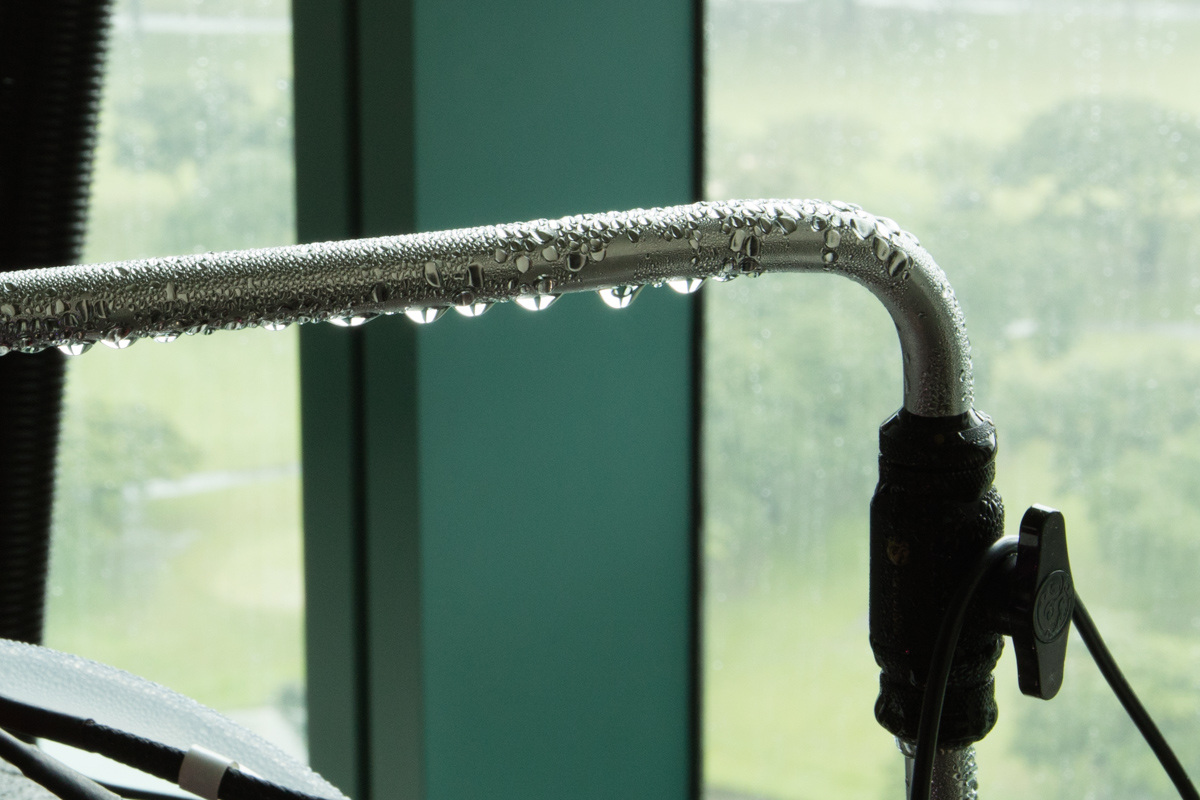Living in the tropics while Overclocking computers utilising chilled water poses a significant amount of issues with Condensation. With temperatures outside reaching the mid 30 C and humidity levels of 76% means that the dew-point is raised very high to above 20 C in certain instances. Considering also that the variation in humidity changes dramatically even within minutes if the Air-conditioner is turned off or for example a window is opened I was looking for a practical solution to keep track of the situation.
I have a Hailea 500A Chiller which I can set to cool the water in the loop to about 3C for Overclocking and getting scores to post on HWBOT.org.
A while back I bought an arduino uno with a Temperature and humidity sensor. In addition I bought the Alphacool 10Kohm water temperature sensor.
I have now been playing around the last 2 days with the kit and managed to find enough details to get the code (sketch) together to do what I wanted it to do. I am not a programmer so hacking it all the way 🙂 and it works.
I started of with the DHT21 temperature /humidity sensor and connected a 2 line LCD screen to the arduino .

So with the AC in the room running at 20C full speed , and the drying function on, I got the temp down to around 21 C with a relative humidity at 44% gave me a good benchmark to test the formulas on for the Dew point. Using the simpler formulas shown on the web Dew-point= (Temperature -((100-humidity)/5)) it shows me a dew -point of 9.78 Celsius. The system is not calibrated but looking up some online calculators I was within a degree in any case.
Next was to get the Alphacool waterloop sensor up and running so I could get a good reading on what was actually coming out of the loop after the CPU. While the loop is supposedly homogeneous in terms of water temperature I want in the end to see what the impact of the CPU is when I am now running a 14 core I9-7940X. Thus in the end there will be two water sensors in loop the connected to the arduino.
Since i need more lines in the LCD i swapped out the two line LCD to a 4 line instead.

Above is the simulation of the waterloop included. the difference between the Airtemp of 26.2 C and the waterloop temp with the sensor just placed on the table is clearly a calibration error between both of them. Effectively they should show the same.
As you can see in this picture also I have turned off the AC and the temp as well as humidity has gone way up leaving me with a dew point of 21.5C which would generate a large amount of water on the pipes and waterblock on the CPU. Simply making it too dangerous for the hardware to keep it running.

This picture shows me using the real waterloop sensor already connected to the computer and the Hailea-500A. The water after the CPU is 5.1C and as can be seen the AC is turned off while the humidity has not reached the 76% it will become if I dont run the AC here. We are in the rainy typhoon season and it has now rained for 48 hours in a row heavily. Again you can see the dewpoint is dramatically shifted. I also put in a warning text when running the waterloop below the dew point.
With no AC the temp will rise to around 28 C humidity to around 76 % and the Dew-point to 22 C.
With AC the temp will drop to around 21 C humidity to around 44% which gives a much better Dew-point at 9.8 C.
Overall this means that I can safely only run the waterloop with Hailea set to about 10C to avoid condensation. Meanwhile if I run it below the dewpoint it also means I have far less condensation in actual water produced compared to not having an AC on.
To see the effect just of the 76% humidity situation i have attached a few pictures.

looks pretty but is not very safe for the hardware. Meanwhile it is distilled water 😉

I have not used eraser or any other material under the cooling block to block out condensation thus am just showing the above as the effect in a 27C with 76% humidity setting.
Ofcourse doing Overclocking and Chilling computers in the tropics means a lot of extra power is wasted on AC units cooling down a room .
Now to improve the situation further I would need to move the computer to the smallest room with AC. Then I should be able to drop the Ambient temp to around 18C. The next step would be to buy a de-humidifier and place in the same room to get the relative humidity down to around 38%. If I manage that then the Chiller can comfortably run at its lowest 3C setting without me having any condensation on the pipes. Just need my woollies to keep warm 🙂
